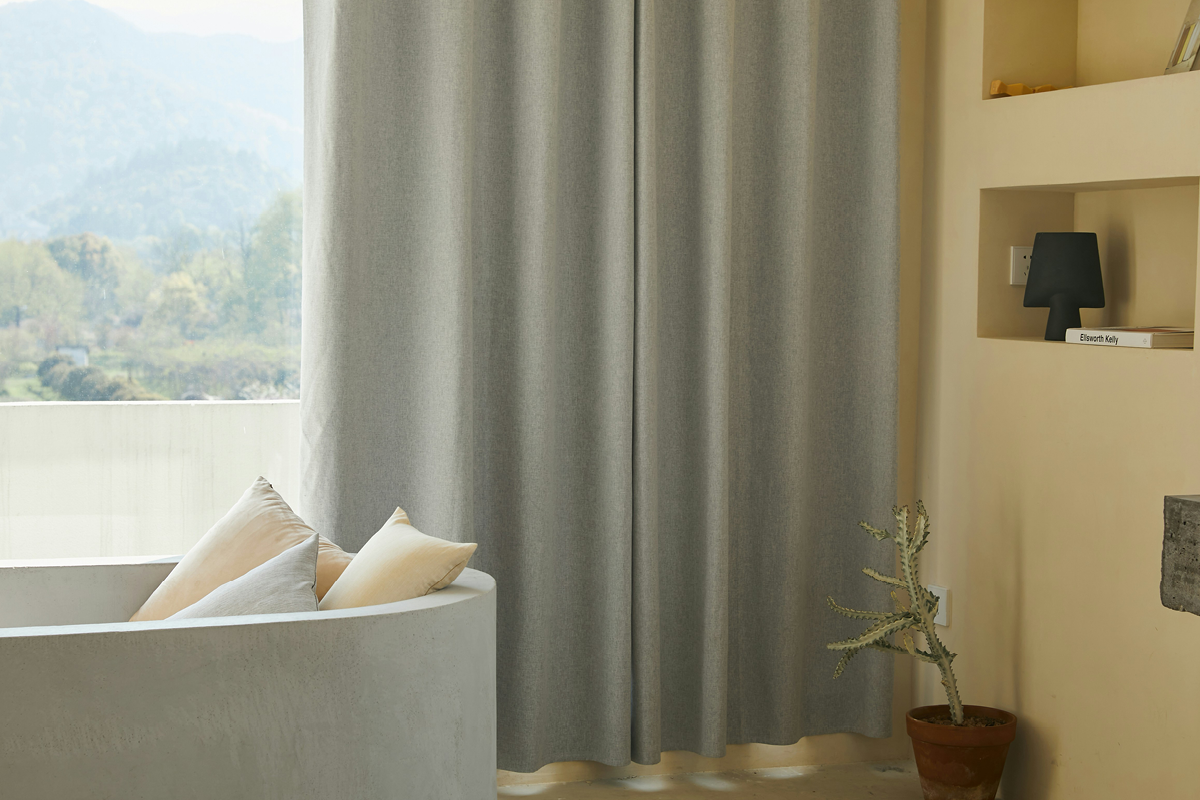THE MOST COMMON DECORATING MISTAKES
It’s easy to make some common mistakes when you’re in the midst of a renovation or redecorating a room. Rushing to finish the job, a lack of proper preparation, and not seeking professional advice can often lead to these errors. However, rectifying these mistakes can often be simpler than you might think. With a bit of planning, patience, and sometimes a professional eye, you can transform your space into a masterpiece.
To help you avoid making any costly mistakes or to help you rectify any mishaps during your decorating journey, painting and decorating expert Pat Gilham at MyJobQuote.co.uk has created this guide on the most common decorating mistakes and how to fix them. Take a look at the comprehensive list below:
Choosing The Wrong Colour
A poorly chosen colour can drastically alter the mood of a room. A colour that looks great at first may then appear too bright or dull when it’s painted onto the walls.
If the colour doesn’t work, then repainting it is the most obvious solution. However, you can also attempt to rectify this in other ways, such as introducing accessories like artwork, curtains, and rugs in complementary colours to help neutralise the dominant colour. Alternatively, you could paint a single accent wall in a contrasting colour as this can add both drama and visual interest.
To avoid this in the future, consider painting some large swatches on the wall and observing them in different lighting conditions at various times of the day. Also, consider consulting a professional colour consultant who will be able to help you choose the right colours to help complement the style and overall aesthetic of your home.
Lack of Cohesion
A lack of cohesion can make your home feel disjointed and rather chaotic. This issue can come about when you mix incompatible patterns, styles, or colours together.
Consider introducing a unifying element to your home’s design, such as a recurring pattern, a common colour palette, or a specific type of style that will tie the whole room together. A focal point, such as a fireplace or a piece of statement artwork, can help draw the eye and unify the space. In addition, decluttering the space can help create a more cohesive and streamlined look.
To avoid this issue in the future, consider making a mood board that can help you visualise the overall look and feel of the space. Begin with a neutral colour palette and add pops of colour with accessories.
Clutter
Too much clutter can make your home feel chaotic, cramped, and overwhelming. Consider donating, selling or discarding some of the items that you no longer need or use.
Make sure to make good use of handy storage solutions such as baskets, boxes, and shelves to keep your things organised. Consider assigning specific zones for different activities, such as a dedicated workspace or a cosy reading nook.
To help avoid this issue in the future, try to be mindful when you go shopping. Think carefully about whether or not you really need the new item and if it will add value to your home. Complete some regular decluttering sessions to keep your home organised.
Mismatched Styles
Mixing incompatible styles can ruin the look of your home. You should consider incorporating a common colour palette, a specific style, or a recurring motif that can tie different styles together. Remove any items that don’t fit the overall aesthetic of the space.
Before you start a project, create a design plan that outlines your desired style and colour palette. When you have the plan ready, make sure you stick to it and avoid impulsive purchases.
Neglecting Lighting
Poor lighting can drastically affect the mood and functionality of a space. It can make a room feel gloomy, uninviting, and even smaller than it actually is. You should try to combine different types of lighting to create a well-lit and inviting space. Ambient lighting can provide overall illumination, task lighting will illuminate specific areas, and accent lighting highlights specific features.
Maximise the natural light by using sheer curtains or blinds that will allow plenty of sunlight to filter through. Dimmer switches will allow you to adjust the level of your lighting to suit different moods and activities. The type of bulb can also significantly impact the atmosphere of a room. Warm-toned bulbs create a cosy and inviting ambience, while cool-toned bulbs are more energising.
It’s best to plan your lighting well beforehand. Consider the lighting needs of each room when planning the design. A lighting designer could help you create a lighting plan that meets your specific needs. Also, make sure to clean the lighting fixtures regularly to ensure optimal output.
Ignoring Scale and Proportion
Choosing oversized or undersized furniture can disrupt the whole balance of a room and may result in it feeling awkward or uncomfortable. It’s important to consider the scale and proportion of your furniture choices in relation to the room’s dimensions.
Make sure to measure the space accurately, including the height of the ceilings, the width of the doorways and the distance between walls. Select furniture that is proportionate to the size of the room. Before you go ahead and purchase the furniture, create an accurate floor plan so that you can visualise how all of the pieces will fit together. If you mix furniture of different sizes, this can help to add some visual interest to the space. Just make sure you balance the proportions.
An interior designer can help you select furniture that is appropriate for your space. When selecting furniture, start with the biggest pieces and then work your way down to the smallest pieces.
Overlooking Texture
Various textures can help add depth, interest, and visual warmth to a room. They can transform your room from boring and flat to a more dynamic and inviting space. Consider combining various textures to create visual interest. For example, you could pair a wooden coffee table with a plush rug or a velvet sofa with a linen throw pillow.
Natural materials such as leather, wood and stone can add warmth and authenticity to a space. Adding textured walls, such as a textured paint finish or wallpaper with a raised pattern, can add depth and dimension to a room. Accessories like woven blankets and textured throw pillows can add visual interest to a space.
When you select your furniture pieces, fabrics, and accessories, be mindful and pay attention to the textures. Don’t be afraid to mix and match different textures to create a more layered and interesting look. Your choice of textures should complement the overall atmosphere and style of the space.
Forgetting The Fifth Wall
The ceiling is often an overlooked element of the room. However, it can have a significant impact on the overall aesthetics. Paying attention to the ceiling can help you elevate your interior design.
Consider painting your ceiling in a bold, contrasting colour to create an eye-catching and dramatic effect. If you have white walls, painting the ceiling in a darker colour can create a cosy and inviting atmosphere. Alternatively, you may prefer to paint the ceiling in a lighter colour to make the room feel more airy and spacious.
Mouldings can add sophistication and elegance to a room. Consider adding some cornice moulding, crown moulding or ceiling medallions to help elevate the overall look of the space. A statement ceiling can become a focal point in the room. Consider using wallpaper, wood panelling, or even a mural to create something personalised and unique.
Not Considering the Ergonomics
Ergonomics is crucial for creating a comfortable and efficient space. Poorly designed seating arrangements and inadequate workspaces can cause discomfort, fatigue, and may even lead to long-term health problems.
Invest in ergonomic furniture. Look out for chairs with adjustable height, lumbar support and armrests to help promote good posture and reduce unnecessary strain on your back and neck. If you have a desk, make sure it is at the right height to prevent straining your neck and shoulders. Not doing so will lead to incorrect posture. Incorrect posture can lead to neck pain, back pain, and headaches.
Good lighting is essential for helping to reduce eye strain. Consider mixing ambient, task, and accent lighting for the best results. A clutter-free space will also help. Keep your space organised by using storage solutions such as shelves, drawers, and organisers.
Final Thoughts
Decorating your home is a very exciting journey. It’s a chance to express your personality and create a space that truly feels like your own. However, it is completely normal to come across some bumps along the way and, as this guide has shown, many common decorating mistakes are not only easy to identify but also surprisingly easy to fix.
From choosing the wrong colour to overlooking crucial elements like lighting and texture, understanding these pitfalls is the first step towards a more successful outcome. By thoughtfully planning, paying attention to cohesion and scale, and remembering the importance of ergonomics, you can avoid costly errors and transform your living space.
Remember, every design challenge is an opportunity to learn and refine your vision, ultimately leading to a home that is both beautiful and perfectly tailored to your needs!
MORE ABOUT THE AUTHOR… PAT GILHAM: Pat Gilham has worked as a self-employed painter and decorator for over 20 years and specialises in domestic home decorating projects. He has also worked closely with MyJobQuote over the past 4 years to provide expert commentary and insights, and has been published in a range of leading industry publications and news outlets.
DISCOVER HOME IMPROVEMENTS, HOME HACKS, AND EVERYDAY ADVICE FOR YOUR HOUSE & GARDEN














